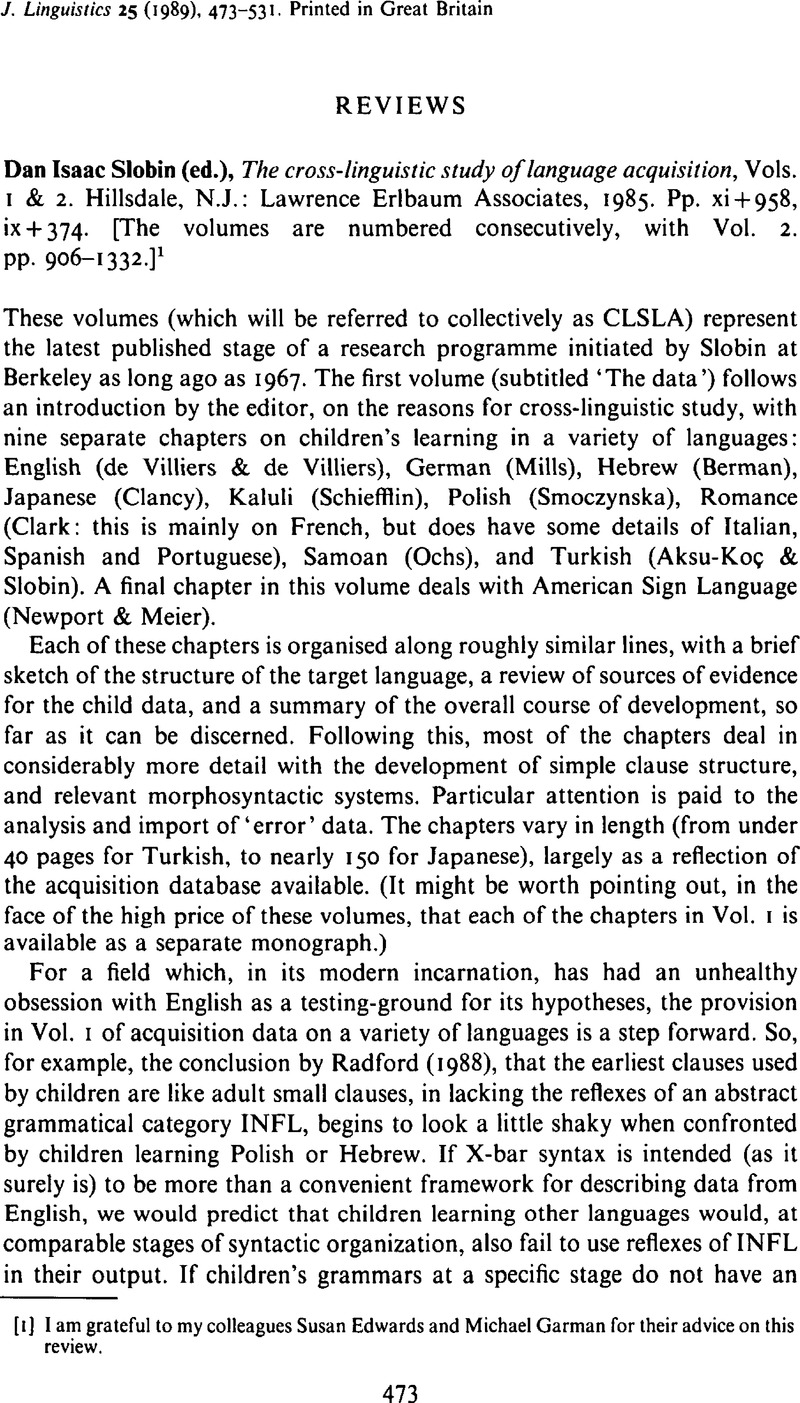Gleitman, L.,
Gleitman, H.,
Landay, B. &
Wanner, E. (
1988). Where learning begins: initial representations for language learning. In
Newmeyer, F. J. (ed.)
Linguistics: The Cambridge Survey, vol.
III.
Cambridge:
Cambridge University Press.
Google Scholar 